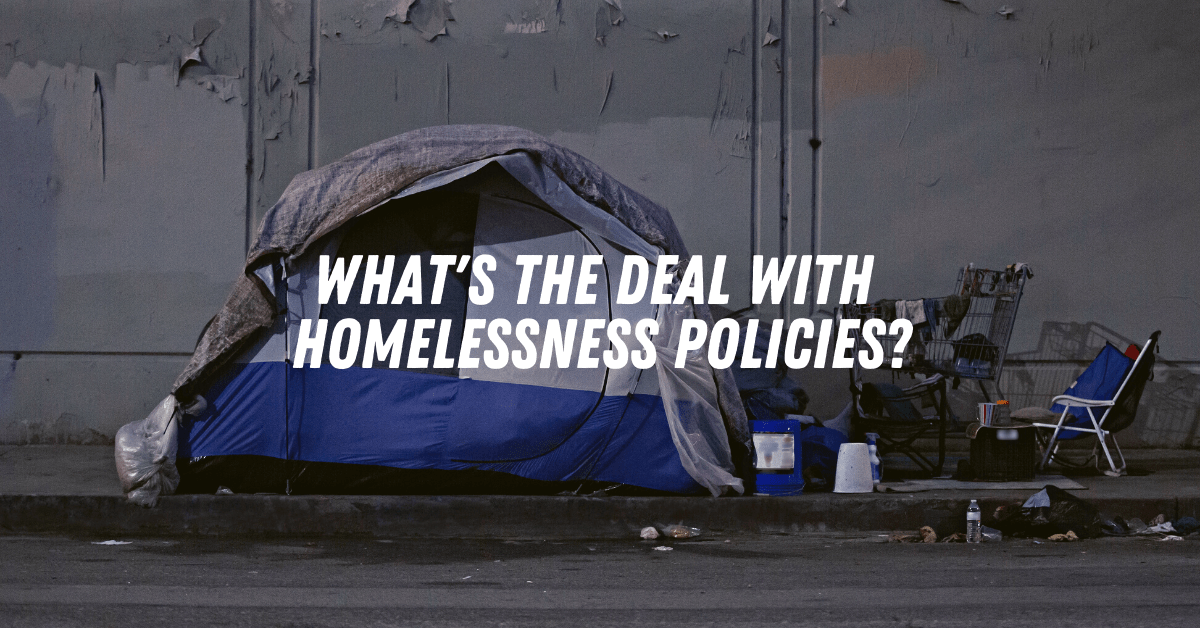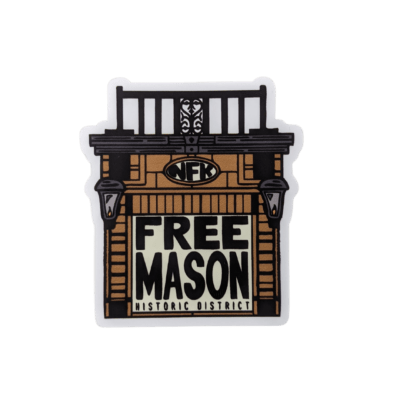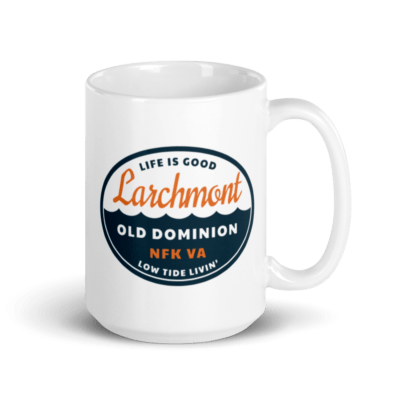I’ve been poor my whole life… it’s like a disease passing from generation to generation
–Hell or High Water
In 1984, then-President Reagan delivered an infamous speech in which he remarked the homeless “are homeless, you might say, by choice.” While widely decried at the time, Reagan wasn’t entirely wrong. Homelessness is a choice, but not on the part of the unsheltered- it’s a choice, you might say, on the part of cities. It’s been almost a year since the Urban Renewal Center partnered with the City of Norfolk to open a shelter in Norfolk’s Neon District. It’s been six months since that shelter moved to its permanent location on Tidewater Drive, where the winter saw record waitlists. This year, NEST (Norfolk Emergency Shelter Team) is on track to disband, while homelessness in the region is steadily rising. Amid this moment, it’s worth asking, is Norfolk’s homeless policy failing? Or, to put it another way, how does their plan fall short in addressing the root causes of homelessness?
Implicit in such a question is that what passes for earnest work on behalf of Norfolk’s unsheltered belies a deep-seated fact that homeless policy aims more at managing destitute life than eradicating homelessness. More often than not, homelessness gets framed as a medical issue that is diagnosable and treatable like a disease. Indeed, homelessness is now a billable medical diagnosis. Homelessness is a health problem, or in the City of Norfolk’s words, homelessness is a “quality of life” issue. While framing homelessness as a medical problem tracks within a broader societal attitude towards the ‘pathology of everything,’ it has profound implications for how we as a community think about solutions to end homelessness. Or, more importantly, what solutions we don’t think about—namely, the deeper issues of an unhinged housing market that catalyzes homelessness in the first place.
The aim here in eschewing prosaic debates about the benefits of ‘Housing First’ vs. ‘Continuum of Care’ is to get at a more profound question: Is it not strange that the homeless policy sees administration by an army of social workers, mental health counselors, and ‘wellness professionals’? As opposed to city developers, urban planners, and economic directors? Glance the staff roster at any shelter. You’re likely to see workers armed with medical degrees over those who work in housing policy; this is especially curious given that the number one driver of homelessness is not substance abuse or mental illness. The number one driver of homelessness is a lack of affordable housing. Even by Norfolk’s account, the lack of affordable housing is the number one cause of homelessness. So, if a shortage of affordable housing is causing homelessness, why have we set about an army of clinicians to task with solving homelessness? What might this say about our tacit assumptions undergirding our thinking about who is homeless? And what the solutions might be?
No number accurately captures the number of people experiencing homelessness in Hampton Roads, let alone the country. Additionally, taxonomies like “unsheltered,” “unhoused,” or “literally homeless,” alongside medical terms like “chronically homeless,” muddy the waters of who does and does not count as homeless. The “2021 Point-In-Time Count,” a once-a-year survey that measures people experiencing homelessness, marked 1,234 homeless people in Hampton Roads. Five hundred sixty-four individuals across Chesapeake, Norfolk, Franklin, Suffolk, Isle of Wight County, and Southampton County; 322 in Hampton, Newport News, Williamsburg, Poquoson, James City County, and York County; and 348 in Virginia Beach. About 63% of the total 1,234 are Black. That said, agencies conducting the survey admit the numbers could be 3 to 6 times higher than recorded. The count is only done once a year in January, and in 2021 some agencies only counted people in shelters– where COVID-19 restrictions meant a limited capacity. In Norfolk, the count excluded those not in shelters. Some estimates put Virginia’s total population experiencing homelessness around 6,000.
That Hampton Roads is home to a significant portion of people experiencing homelessness is symbolic of the region’s swelling unaffordable housing market and pronounced rental instability. Hampton Roads is the 4th most expensive rental market in Virginia. The average 1-bedroom apartment in the Norfolk-Virginia Beach area hovers around $1,100 to $1,300. About 40% of the population in the area rents. To afford a 1-bedroom without being rent-burdened (spending more than 30% of your income on rent), the average renter needs to make around $21.15 an hour. The minimum wage is $11.00 an hour. To put that in perspective, someone working a minimum wage job would need to work 77 hours a week to afford a 1-bedroom apartment (of course, employees who receive tips can be paid below minimum wage by their employer). Norfolk, Hampton, Newport News, and Chesapeake all place in the top 10 evicting cities in the U.S. In 2016, in Norfolk alone, there were 4,318 evictions. That’s almost 12 households evicted every day. Some of those evicted stay with friends and family. Others end up in homeless shelters.
What happens when someone enters homelessness? Homelessness in Norfolk is managed through a network of public-private actors within the non-profit industrial complex, whose list is almost as exhaustive as the acronyms they use to communicate. These include familiar names, such as the Salvation Army, the Union Mission, and the Norfolk Community Services Board (CSB). Each organization is part of a regional coalition. Norfolk is part of the Southeastern Virginia Homeless Coalition (SVHC). The SVHC is a Continuum of Care (CoC), a “planning body” coordinating homeless services. The SVHC is headed up by The Planning Council, the administrative coordinator for all homeless coalitions stretching from Williamsburg to Franklin.
Let’s offer a hypothetical of what happens when someone enters homelessness and how the homeless policy operates on the medical model. Say K walks into a shelter. Two things happen almost immediately. A shelter intake is done, collecting K’s basic information, and a call is made to the Planning Council’s Housing Crisis Hotline. K is then administered a survey called the Vulnerability Index – Service Prioritization Decision Assistance Tool, or VI-SPDAT. The VI-SPDAT is a scorecard that assigns points to a person’s homelessness. Composed of 27 yes-no-refused questions, they range from the banal to the prying. Over 60? There’s a point. Homeless for more than a year? Another point. Talked to the police? Use Drugs? Sold your prescription medication? Exchange sex for money? All add points. The higher K’s VI-SPDAT score, the faster K is likely to receive homeless services from agencies in the area.
K’s VI-SPDAT then gets entered into the Homeless Management Information System (HMIS), web-based software for the administration and tracking of the homeless population. K’s name and VI-SPDAT score get placed on the By Name List (BNL), a kind of communal Rolodex for people experiencing homelessness. Now, K waits at the shelter. After a few weeks, K’s case is “conferenced” at the Service Coordination Committee (SCC), a bi-monthly meeting of homeless service agencies in the SVHC. K’s case will be referred to an agency that can best meet K’s needs based on his VI-SPDAT. Now, that agency has seven days to accept or decline K’s referral, which they might do if they are at capacity. Alternatively, if that agency accepts K’s referral but can’t reach K within seven days, the referral is nullified, and K’s name will be returned to the BNL. Now, K will wait until their case is presented again.
By SVCH’s account, this process ensures the best allocation of agency resources. But what comes with the success of resource management doesn’t always benefit the individuals in need. K has been homeless for a year. K does not have a cell phone. No one told K to expect a call (on a phone they don’t have) from someone they don’t know that works for a non-profit.
Moreover, K doesn’t have a driver’s license or proof that they’re from Norfolk. In the industry, K is not what’s called “document ready.” Without proving K is from Norfolk, K is ineligible to receive housing services. K’s case will most likely not see escalation to the Service Coordination Committee without proof of residency. K will have to wait nine months at the shelter to establish Norfolk residency. Alternatively, K could try and get an I.D. at the DMV, but K will need to provide proof of residency to do so. K gets stuck in a Kafkaesque loop whose tautological puzzle is better suited for an MC Escher drawing than homeless policy.
Fast forward nine months, K is now ‘document ready,’ and their case is presented to the SCC. As a result, K gets a Housing Choice Voucher (HCV); this is no small feat. The Norfolk Redevelopment and Housing Authority (NRHA) has only allocated 36 vouchers for homeless individuals out of its supply of 4,500. K can now use that voucher to find an apartment, but that’s easier said than done. As of writing, the NRHA lists only five apartments that take vouchers. Plus, K’s on-the-clock: vouchers can expire. If K doesn’t find a home in time, K is at risk of losing their voucher and will have to restart the entire process over again.
While K’s story is hypothetical, it is an amalgamation of multiple people’s stories who have passed through shelters in the last 18 months.
It might be easy to join the chorus of small-government darlings flummoxed by tax-payer waste that’s better sorted out in the private sector or, better still, by churches. Before we go hunting for the invisible hand, keep in mind that many of the organizations that make up the SVHC, including the Planning Council, are private non-profits, many of whom are faith-based. Indeed, the stumbling block of being “document ready” is a remnant from the late 19th century when churches required laborious “work tests” in exchange for lodging.
What’s worth highlighting here is how the homeless policy makes little intervention into the economic conditions that produce homelessness in the first place. Instead, the city gears its policy toward treating homelessness as a medical ailment, pathologizing homelessness as a mental health crisis or addiction. How? Recall that anyone leveraging homeless services in Norfolk will be met first with the VI-SPDAT, a survey tailored to mental wellness over economic burden. Most versions of the VI-SPDAT ask: “Has your drinking or drug use led you to be kicked out of an apartment or program where you were staying in the past?” Implicit in this question is the assumption that anyone homeless must also be using drugs. There are certainly homeless people who suffer from profound mental illness and addiction. But does this question capture the situation for the 4,300 evicted in Norfolk?
Furthermore, failing to score a three or above on the VI-SPDAT renders you ineligible for most homeless services. To benefit from homeless services, one has to score high on the VI-SPDAT, and one has to be mentally ill or in a health crisis. As social theorist Joseph Davis said, “it’s all pathology, all the time.”
This model of homeless governance reaches its apex in how homelessness sees a diagnosis as a “chronic” disease. For example, a 2016 report from the Planning Council recasts the “chronically homeless” as “chronic users of jails, Emergency Rooms, and emergency medical transport.” In a comic image, the Planning Council notes how chronic users “often become “super users” of costly public services,” as if one becomes addicted to ambulance rides the same way one does to drugs. Homelessness and addiction are twinned. The goal here isn’t to nitpick at language, nor is it to take potshots at the remarkably dedicated, caring staff that work for these organizations. But the Planning Council shapes homeless policy across the region; their words condition how the populace perceives homelessness. When we choose to address homelessness as a medical problem, we fail to attune to the deeper housing currents causing homelessness.
The ‘medicalization’ of the homeless policy does not occur in a vacuum. The discourse is present in the way city leaders think about their problems. On the first page of Norfolk’s “2021 Annual Report,” Norfolk finds “issues range from basic needs, such as the availability of affordable housing to quality of life issues like homelessness….” Already homelessness is set on one end of a spectrum as a “quality of life issue,” at the other end sits affordable housing. At issue is the quality of life for those in Norfolk, not those who just sleep here. Indeed, in language eerily reminiscent of crime reporting, one Virginia-Pilot article on the Point-In-Time-Count cautions people “should not try to speak with people they believe may be experiencing homelessness.” Beyond the anxiety, Norfolk’s quality of life sentiment is codified in their decision to house Norfolk’s homelessness office as a branch of the CSB. This agency works tirelessly for people with “mental health, intellectual disability, and substance abuse needs.” Absent from the CSB’s authority is setting housing policy. In a recent presentation, they admit housing is mostly out of their hands:
There are and will be many persons panhandling to “make rent,” “make enough for a hotel,” and/or to “avoid shelters,” which will continue until the housing and economic crisis improves. We will focus on what we CAN do to bend the curve.
Casting homelessness primarily as a medical problem reduces homeless life to a homogenous category captured in 27 yes-or-no questions. At the same time, it provides a cover story for the true failures of housing policy which are the root cause of why so many experience homelessness in Hampton Roads. Decoupling homeless policy from the systemic failures of housing policy gives us a blinkered, radically disabling vision of the issue. Thus we come to see homelessness through a lens darkly rather than for what it actually is: a failure of Norfolk’s housing policy whose history of redlining has long locked Blacks out of the chance to live in stable housing; whose financialization daily squeezes out poor and working-class renters; whose ballooning rents are steadily pushing homelessness upwards. To pillage medical language, without treating homeless policy as housing policy, we will be stuck treating the symptom, not the illness. In Reagan’s words, whether we choose to treat the illness is a choice.

Alex Fella
Alex Fella is a writer and researcher, his work focuses on the built environment and the natural world. He is the Director of Research at the Urban Renewal Center and the founder of CityWork, an organization that empowers nonprofits with research and data mapping. He is a 4th year fellow at the Canadian Psychoanalytic Society & has a master's in Philosophy from Yale University. He enjoys fixing old cars and rooting for the Montreal Canadiens



















































